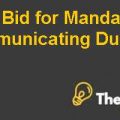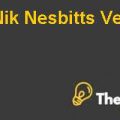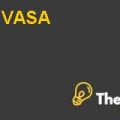
LEGO GROUP: BUILDING STRATEGY Case Solution
Introduction
This paper has been made to enable the reader to understand the company’s internal and external analysis as well as to evaluate the company’s competitive position, which has been analyzed by different criteria such as the PEST analysis, Porter five Forces etc.
Moreover, the financial report has been made in order to understand the financial position of the company as well as the growth potentials present in the company. Furthermore, the financial analysis will also enable the reader to understand the growth trends, future prospects and the profitability measures.
Finally, there is a conclusion section, which will conclude the whole paper and the findings which were analyzed and evaluated by different techniques.
Porter’s Five Forces
Threat of New Entry/ Entry Barriers
The threat of new entry in the branded toy industry is quite low as it involves a high setup cost in order to manufacture seasonal toys in the first half of the year to earn a higher profit by selling them in the respective season. There is a big challenge that is production planning,which is counted as an asset in this industry which lowers the threat of new entry because there are several alliances among the retailers and toy manufacturers. Moreover,outsourcing is a feasible option for this industry, which lowers the cost of production and the new players are do not have access to those outsourced manufacturers, which also reduces the threat of a new entrant. However, the outsourcing strategy may lead to lower quality whereas; the new player cannot enter into the branded toy market because of the high setup cost and the existence of strategic alliances in the industry.
Rivalry
The global toy market has been saturated by the existence of many branded toy manufacturers; however they are in the form of large manufacturers or the group of small manufacturers who make alliances to strengthen their competitive position.Lego group has also been facing a vigorous competition and its main competitors are Mega Brands, Mattel and Hasbro. It is also known that Lego will face an intense competition with Mattel since it is making offers to buy Canada’s Mega brand. This alliance may become a major threat for Lego as it will strengthen the competitive position of Mattel as well as it will enhance its global position and visibility.
Bargain power of Supplier
In this industry the power of the supplier is quite low since the supplier is completely dependent on the retailers in order to gain shelf spacing as well as to reach the end consumer the retailers, which gives them room to reach the end user such as Wal-Mart and Toys R US who have revenues of almost $450 billion and $14 billion with respect to the toys,therefore they have strategic relationship globally. Suppliers are also independent over these retailers, which disable their bargaining power.
Bargain Power of Buyer
On the other hand, the buyer has a high bargaining power in this industry as the manufacturers are aggressively looking to reduce their cost of production as well as to catch the attention of the buyer with the latest possible ways. However, the buyers are also seeking to improve their products in order to stay competent.
In addition to this, buyers have the option in the form of different distribution channels such as toy retailers, online distribution options, branded stores and discounted stores where a variety of toys are available from various brands..................
This is just a sample partial case solution. Please place the order on the website to order your own originally done case solution.











